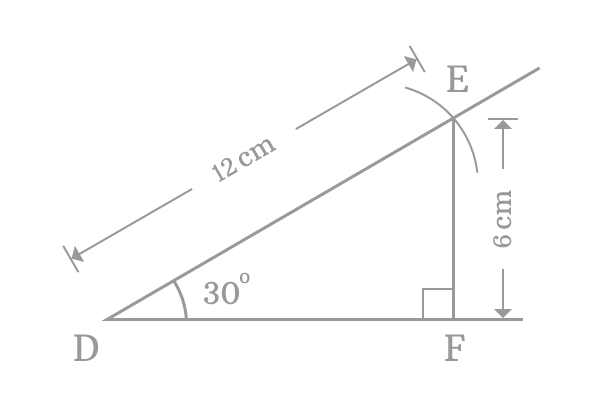The inverse of the sine function is called the inverse sine function.
The sine function represents a value of the ratio of the length of opposite side to length of hypotenuse at the respective angle of a triangle, whereas the inverse sine function represents an angle for a value of the ratio of the length of opposite side to length of the hypotenuse of the same triangle.
The inverse sine is written in short form as $\large \arcsin$ or $\large \sin^{-1}$ in mathematics.
According to the definition of the inverse sine function, the inverse sine function is expressed in mathematical form as follows.
$\large \sin^{-1} \normalsize \Bigg[\dfrac{Length \, of \, Opposite \, side}{Length \, of \, Hypotenuse}\Bigg]$ $\,=\,$ $Angle \, of \, the \, Triangle$
It can also be written in the following form.
$\large \arcsin \normalsize \Bigg[\dfrac{Length \, of \, Opposite \, side}{Length \, of \, Hypotenuse}\Bigg]$ $\,=\,$ $Angle \, of \, the \, Triangle$

For example, $\Delta BAC$ is a right angled triangle and its angle is $\theta$. $\overline{BC}$ and $\overline{AC}$ are opposite side and hypotenuse, and their lengths are $BC$ and $AC$ respectively.
The arc sine is expressed in mathematical form as follows for the $\Delta BAC$.
$\large \sin^{-1} \normalsize \Big(\dfrac{BC}{AC}\Big) \,=\, \theta \,\,\,$ or $\,\,\, \large \arcsin \normalsize \Big(\dfrac{BC}{AC}\Big) \,=\, \theta$
Assume, the quotient of the length of the opposite side by the length of hypotenuse is $x$.
Then, $\large \sin^{-1} x \,=\, \theta \,\,\,$ or $\,\,\, \large \arcsin x \,=\, \theta$
The $\sin^{-1} x$ or $\arcsin x$ is the representation of the inverse sine function in mathematical form.
The functionality of the arcsine or inverse sine function can be understood geometrically from this example.

The geometric procedure is constructed a right angled triangle $DEF$ and its angle is $30^\circ$. Now, measure, the length of the opposite side $\overline{EF}$ by using a ruler. You will observe that it is $6 \, cm$ exactly.
The functionality of the inverse sine function is expressed in mathematically in the following way.
$\sin^{-1} \Big(\dfrac{6}{12}\Big) \,=\, 30^\circ$
$\implies$ $\require{cancel} \sin^{-1} \Big(\dfrac{\cancel{6}}{\cancel{12}}\Big) \,=\, 30^\circ$
$\therefore \,\,\,\,\,\,$ $\sin^{-1} (0.5) \,=\, 30^\circ$
It can also be expressed in another form.
$\therefore \,\,\,\,\,\,$ $\arcsin (0.5) \,=\, 30^\circ$
The inverse of the sine function is given that the angle of the right angled triangle is $30^\circ$ for the value $0.5$.
A free math education service for students to learn every math concept easily, for teachers to teach mathematics understandably and for mathematicians to share their maths researching projects.
Copyright © 2012 - 2023 Math Doubts, All Rights Reserved